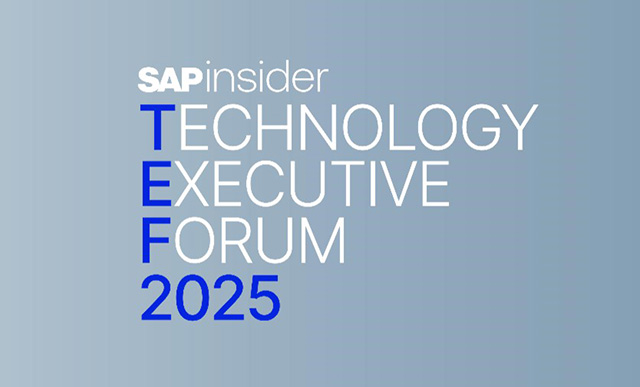Catalyzing Innovation in Life Sciences with SAP & NTT DATA Business Solutions
Meet the Authors
Key Takeaways
Digital transformation in life sciences is essential for improving efficiency and patient outcomes; however, it requires overcoming data consolidation and governance challenges.
Building a resilient supply chain is crucial for continuous access to life-saving treatments, which can be supported by leveraging SAP's supply relationship management tools and advanced technologies.
Data privacy and security are critical, necessitating up-to-date solutions such as SAP's Data Protection and Privacy tools, which help life sciences companies comply with regulations like HIPAA and GDPR.
The life sciences sector is undergoing a rapid digital transformation, driven by the need for greater efficiency, improved patient outcomes, and diversified revenue streams. However, this digitalization presents unique challenges.
Russell DeLapp, Industry Solutions Principal, Life Sciences, at NTT DATA Business Solutions explains some of these hurdles and how they can be overcome.
Overcoming Data Hurdles
“Pharma organizations often have multiple systems,” DeLapp explains. “The challenge is to consolidate all of this data from different systems to create a GxP data fabric that paints the picture of the organization holistically.”
Explore related questions
Moreover, data governance and control are also a continuous process that evolves with the organization. “We always suggest a strong master data governance tool with embedded workflow to ensure accurate information from multiple stakeholders,” DeLapp says.
To achieve unified data, NTT DATA Business Solutions has a two-pronged approach. First, its advisory teams review the IT landscape and work with the business to identify solutions that can be consolidated using best practices. “We will look at data consolidation efforts to collect the raw data in one data lake, then harmonize and curate the raw data in a universal way,” DeLapp adds.
Second, the team can layer in advanced technology that looks at the curated data in a holistic way.
Building Supply Chain Resilience
Maintaining a resilient supply chain is paramount in the life sciences to ensure continuous access to life-saving treatments. According to DeLapp, staying updated on the latest ERP releases like RISE with SAP is a great way to deploy validation-ready features and functions to overcome challenges in a dynamic industry like life sciences.
“Many biotech and pharma companies rely on specific raw materials and active pharmaceutical ingredients (APIs) that are often sourced from a limited number of suppliers,” DeLapp says. “SAP’s supply relationship management can help facilitate better collaboration and communication to ensure a more predictable supply chain. We also encourage our customers to leverage SAP for proactive risk management and contingency planning.” Scenario planning and simulation can also help them become better prepared for a potential impact.
With Cell and Gene Therapy (CGT) being one of the fastest-growing sectors in life sciences, many companies are expanding their portfolios to include innovative CGT products. They are also investing in advanced manufacturing capabilities and collaborating with smaller biotech firms to accelerate the development and commercialization of these cutting-edge therapies. “SAP and NTT DATA Business Solutions support these initiatives with tools like SAP’s Cell and Gene Therapy Orchestrations and our cold chain management that helps manage time out of refrigeration and thawing times,” DeLapp notes.
Ensuring Data Privacy
According to DeLapp, data privacy and security are non-negotiable in the life sciences sector. This is where solutions offered by SAP help companies ensure the security of their data. “SAP offers a Data Protection and Privacy (DPP) solution. This includes consent management, deletion of personal data, and change logs,” he explains. “Furthermore, SAP’s intelligent supply chain management offers data encryption, strict access controls, and data anonymization that align with HIPPA and GDPR.”
DeLapp recommends that, like supply chains, life sciences companies must stay updated with the latest releases as SAP regularly updates its platforms with the latest security patches. He suggests that having a solution that is based on CGXP is also a huge advantage for companies to reduce risk and cost to validate, as well as increase the quality process for patient safety.
“In recent years the FDA introduced the Drug Supply Chain Security Act (DSCSA) which meant that life sciences companies need to not only track the movements within their walls but also where that raw material came from and where it goes,” he says. “SAP works with regulators and has developed SAP Advanced Track and Trace for Pharmaceuticals and the SAP Integration Collaboration Hub to be well ahead of this regulation.”
Leveraging New Technologies
Today, the life sciences sector is also looking to diversify its revenue streams by leveraging AI, machine learning (ML), and robotic process automation (RPA). Giving an example, DeLapp notes, “One organization I worked with manufactured and grew human cells for clinical testing, which were imaged and reviewed by highly specialized PHDs. However, imaging can be subjective with inconsistent results. This organization achieved more consistent results by curating the data and layering AI on top of the imaging data for a faster, safer, and more constant release of the batches.”
AI can also be utilized for predictive analytics to accelerate drug discovery and enhanced personalized medicines as well as decentralized clinical trials. Some of its other benefits for life sciences companies include:
- Faster patient recruitment
- Diversity
- Lower costs
- Enhanced data
- Improved patient experience
What This Means for SAP Insiders
Data is King (and Queen). It is critical for SAP users in life sciences to prioritize establishing a robust GxP data fabric by consolidating disparate systems, harmonizing data, and implementing strong data governance. SAP partners like NTT DATA Business Solutions help companies utilize their data to unlock the full potential of advanced technologies like AI and ML, enabling better decision-making, improved quality control, and faster drug discovery.
Embrace continuous improvement and stay current. The pharmaceutical landscape is constantly evolving, with new regulations, technologies, and market dynamics emerging regularly. SAP users should stay updated on the latest SAP releases like RISE with SAP, avoiding reliance on long-term workarounds.
Strategic partnerships are key. Life sciences companies can leverage SAP’s advisory services for system consolidation and best practice implementation. Moreover, partnering with companies like NTT DATA Business Solutions can provide specialized expertise in areas like cold chain management for CGT.






